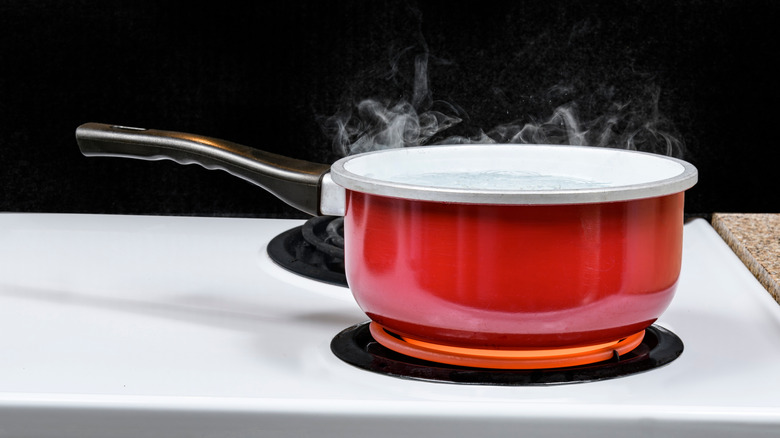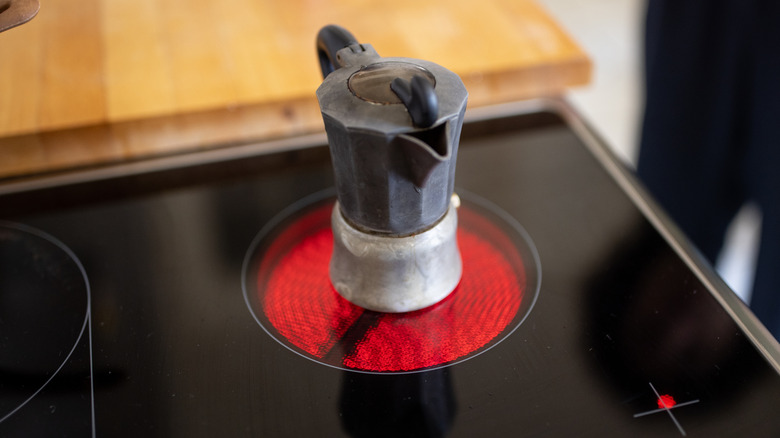Why Mismatching Your Cookware To The Burners Is A Major Electric Stove Mistake
When it comes to cooking efficiently and safely on the best electric ranges, there's one detail many people overlook: matching your cookware to the burner size. It may seem like a fussy thing — after all, heat is heat, right? Not exactly. Using a pan that is larger or smaller than a given burner doesn't just lead to uneven cooking; it can also waste energy, damage your cookware, and reduce the lifespan of your stove.
One consequence of mismatched cookware and burner size is uneven heat distribution. If your pan is significantly smaller than the burner, the sides of the pan may get too hot while the center stays cooler, leading to scorched edges and undercooked centers. Conversely, if your pan is too large for the burner, the area directly above the heating element will be much hotter than the outer edges, making it hard to get a consistent cook. Precision matters in cooking, especially when you're trying to make a delicate, heat-sensitive dish, like Julia Child's French omelet. Using cookware that matches your burner size ensures heat is evenly distributed across the entire cooking surface.
Using the wrong cookware is also a waste of energy. Electric stoves generate heat through metal coils or glass-ceramic surfaces, and they're designed to transfer energy most efficiently when the burner and cookware match. Using a small pan on a larger burner wastes a significant amount of the heat produced, and a large pan on a small burner will take a long time to heat properly. Cooking more efficiently helps conserve energy, plus, who doesn't want lower utility bills?
Using the wrong electric burner can damage your cookware
Choosing the right cookware ain't cheap, and improper burner use can shorten its lifespan. When a pan is placed on a too-small burner, it can warp from the concentrated heat at the center. Besides being ugly, warped cookware won't sit flat on the burner, making future heating even more inefficient. In particular, nonstick pans are vulnerable to damage from too much direct heat. And if the burner extends beyond the base of the pan, you risk damaging the finish or the handle, leading to chipping, cracking, or the breakdown of nonstick coatings.
Electric stoves, especially those with smooth-top surfaces, are sensitive to how heat is transferred. Overheating a burner by using mismatched cookware can stress the heating element of the glass surface. Over time, this strain may cause the burners to wear out prematurely or the glass to develop cracks. Using correctly sized cookware also ensures better contact with the surface, allowing sensors to work properly and maintain accurate temperature control.
Finally, using the wrong cookware on the wrong burner can increase your risk of accidents. Overhanging pans on small burners may become unstable, especially if they're heavy or filled with hot liquids. On the flip side, pans that are too small on large burners can cause surfaces or handles to overheat, creating burn hazards. So the next time you fire up the burner, take a second to choose the right pan. Your dinner (and your wallet) will thank you.

